Outforia Quicktake: Key Takeaways
- There are numerous types of fishing, ranging from saltwater and freshwater to ice fishing and fly fishing. In this article, we’ll go through 40 different types of fishing techniques.
- Some fishing methods, like hand lining, are more primitive and require minimal equipment, while others, like big game fishing, require heavy-duty gear.
- Fishing can be done for sport, recreation, or commercial purposes, with various techniques and gear used for each purpose.
- Different fishing boats and styles can be used depending on the type of fishing and the angler’s preferences.
- Fishing is not only a fun activity, but also provides health benefits from consuming the fish caught.
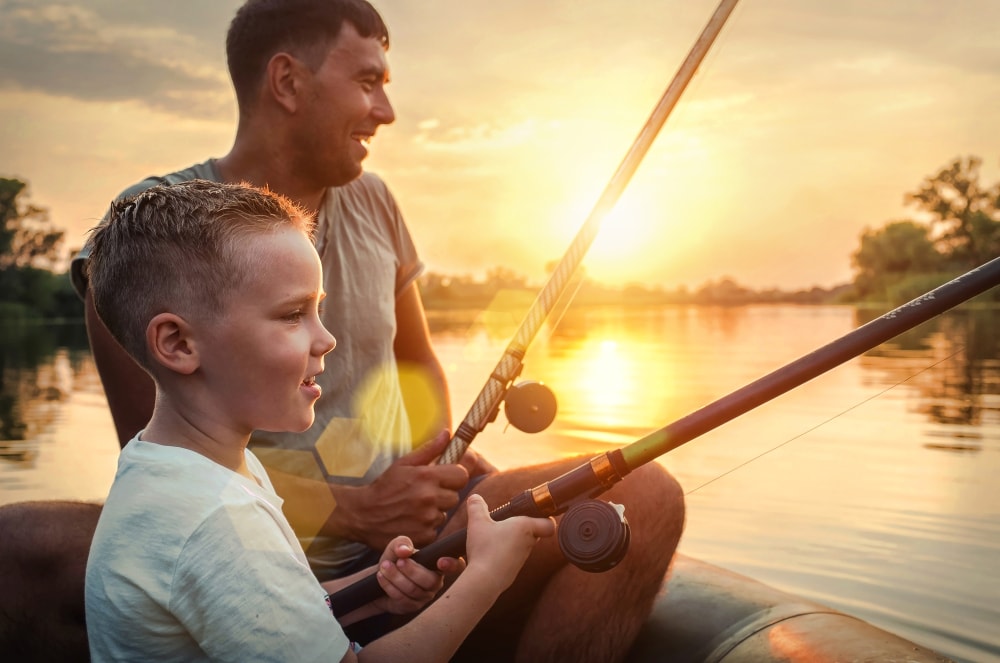
Angling is the action of one who angles, especially the action or sport of fishing with hook and line.
For the last six years, my life has revolved around fishing. Before I was a professional angler, I grew up fishing small creeks and streams with my father.
Whether it’s an 800-pound (363 kg) bluefin tuna or tiny native brook trout on the fly, the types of fishing seem endless to me. Even the most seasoned, well-rounded anglers seek out new types of fishing to master.
Through my travels and quests for fishing adventures, I’ve compiled a list of all the different ways to fish. For everything that swims, there is a method to catch it!
You May Also Like: 20 Most Important Fish In Lake Michigan: Native And Introduced
Types of Fishing
1. Saltwater Fishing
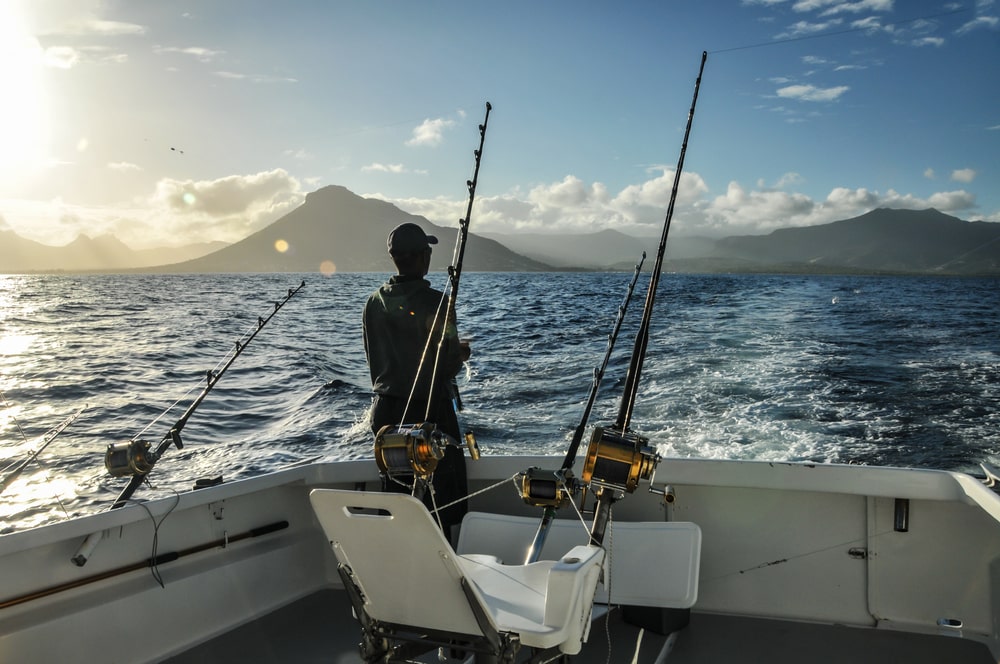
This is defined as any angling that takes place in salt or brackish water. Whether in the oceans, bay, or even a salty estuary, saltwater fishing is very diverse.
2. Inshore Fishing
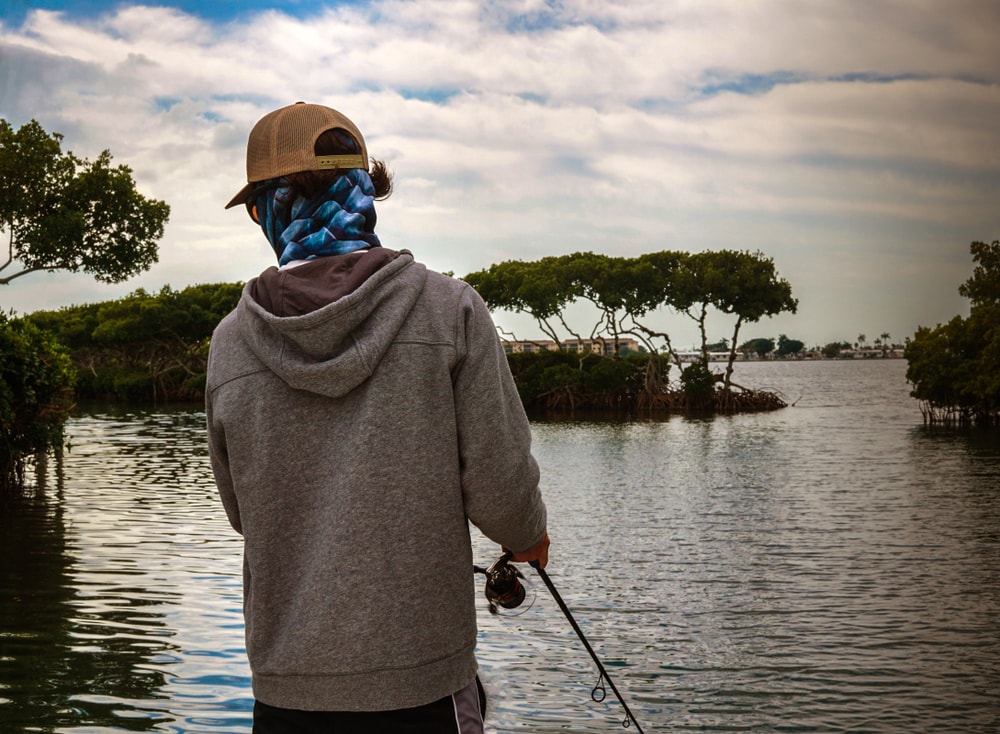
A form of saltwater fishing that takes place within three miles of the shore. This method of fishing can take place either from a fishing boat or from the shore.
3. Nearshore Fishing
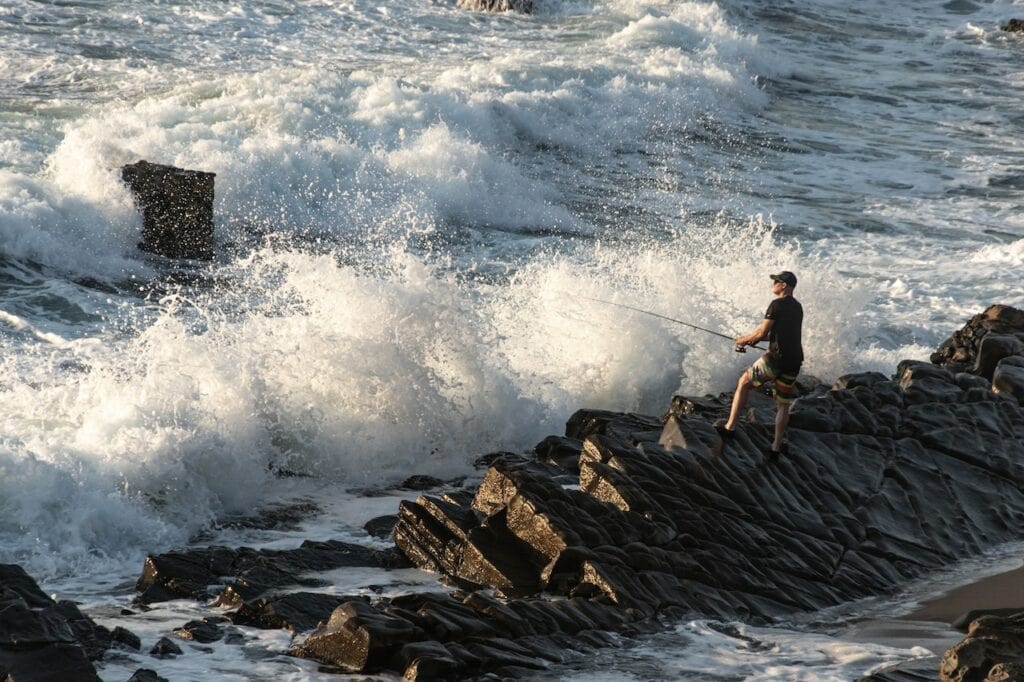
Fishing anywhere between three and 18 miles offshore. This is popular amongst anglers because of the broad variety of species to target without having to run the extra miles to go offshore.
4. Offshore Fishing
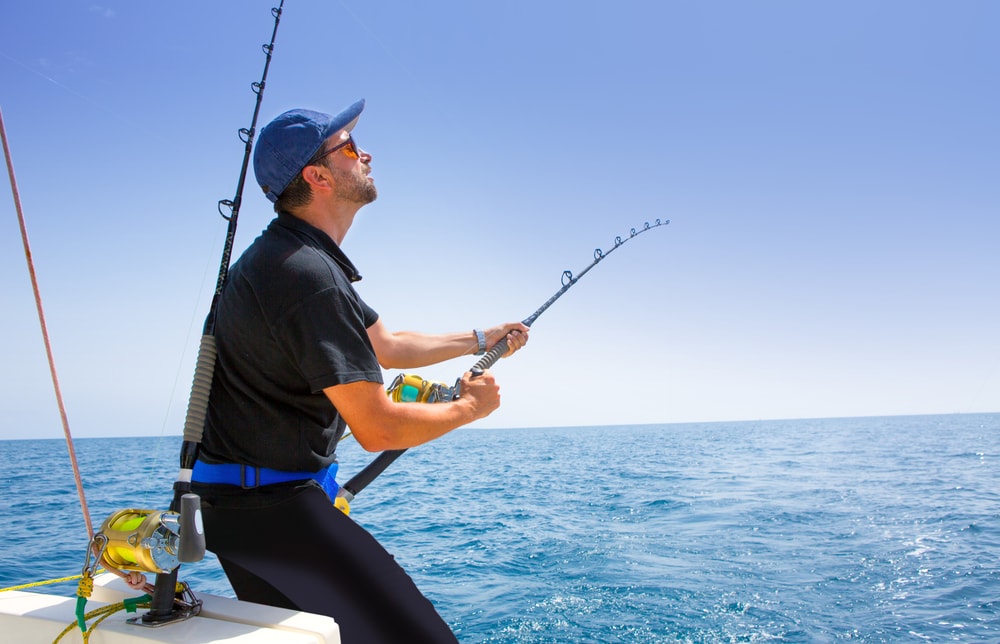
This method of fishing takes place 18-100 miles (29 – 161 km) from the shore. This is where large pelagic species like tuna, billfish, and wahoo are caught.
5. Freshwater Fishing
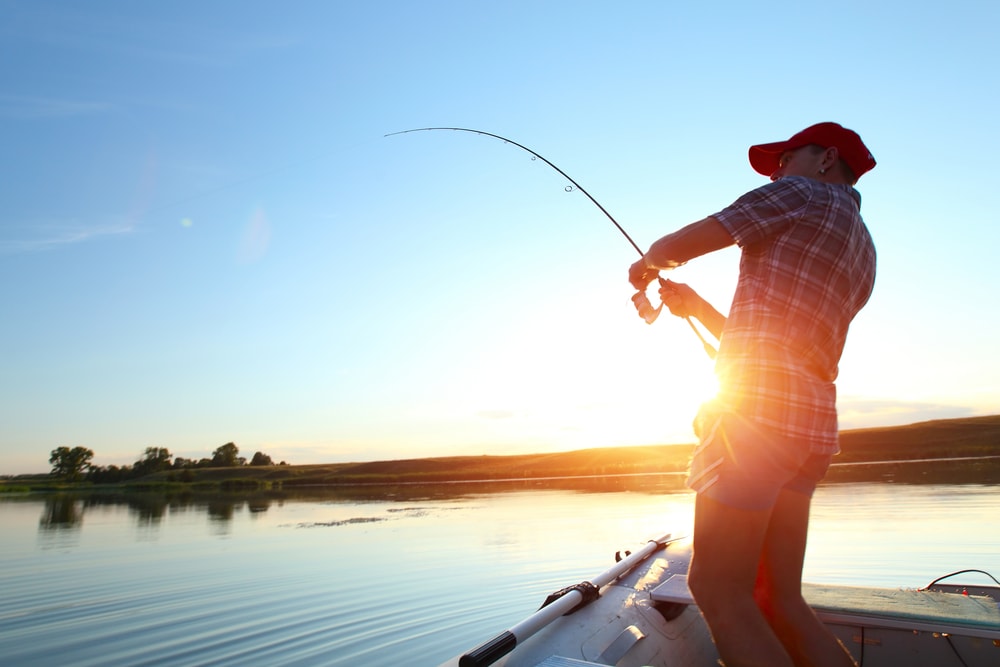
Freshwater fishing is when fishing methods are used in bodies of water that are landlocked or completely fresh. Examples are rivers, streams, lakes, and creeks. The two most popular freshwater species are trout and bass.
6. Kayak and Canoe Fishing
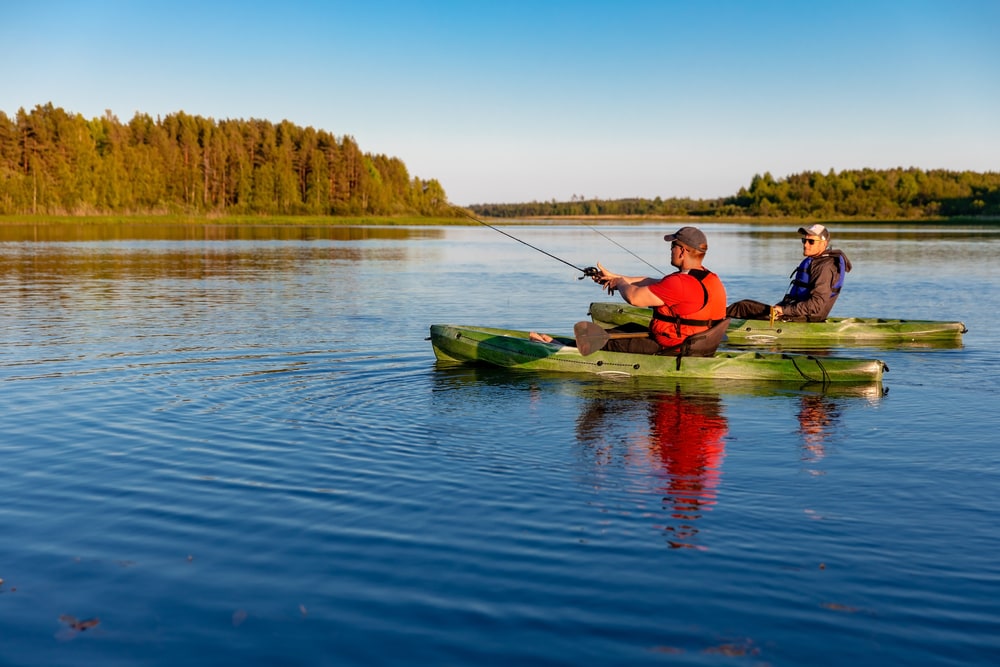
This is when angling takes place from a small, self-powered vessel, either a kayak or canoe. Both methods can be deployed in salt or freshwater. Saltwater kayak fishing has exploded in popularity in recent years. The largest fish ever caught from a kayak was a 1,247-pound (565.6 kg) Greenland shark!
7. Fly Fishing
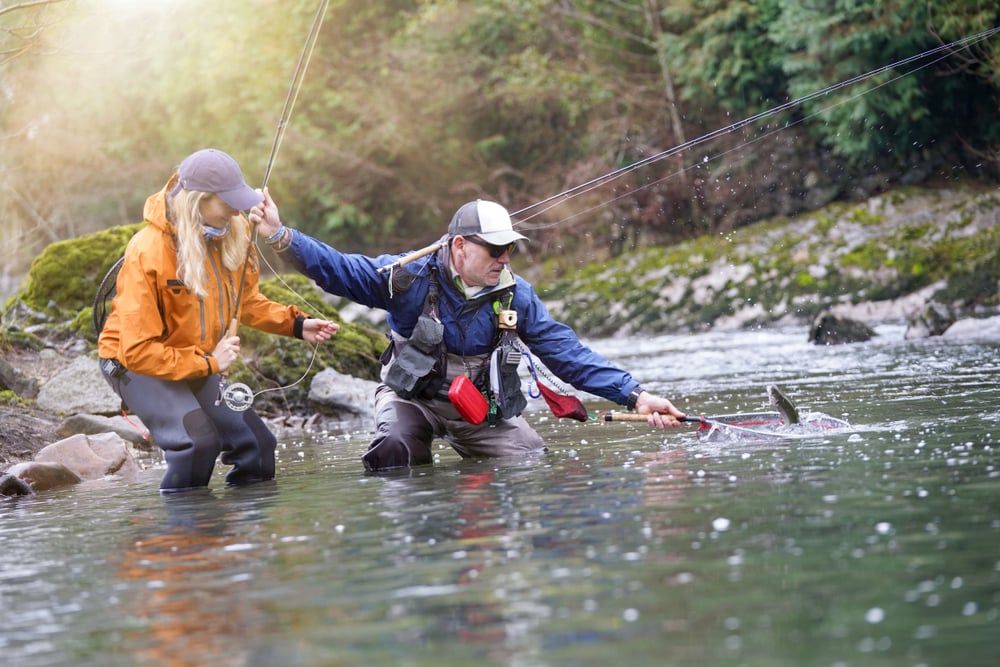
Fly fishing is a method where special fishing rods, lines, and lures called flies, are used. This mimics small insects and larvae that float on the water’s surface. An enticing meal to the predators below!
Flies range in size from no bigger than a black fly, to 12-inch-long (30 cm) feathered flies. The larger the fly, the larger the fish.
The fly is strategically cast onto the surface by the angler. They strip the line from the reel to give the lure natural action. When the fooled fish takes the bait, the angler strips the line back toward themself. Quickly, the angler cranks the reel to tighten down and fight the fish.
Fly fishing rods are measured by weight class. Reels are specially designed to hold the fly line which is thicker than regular conventional fishing lines. An easy cast to learn is the slingshot cast!
8. Surf Fishing
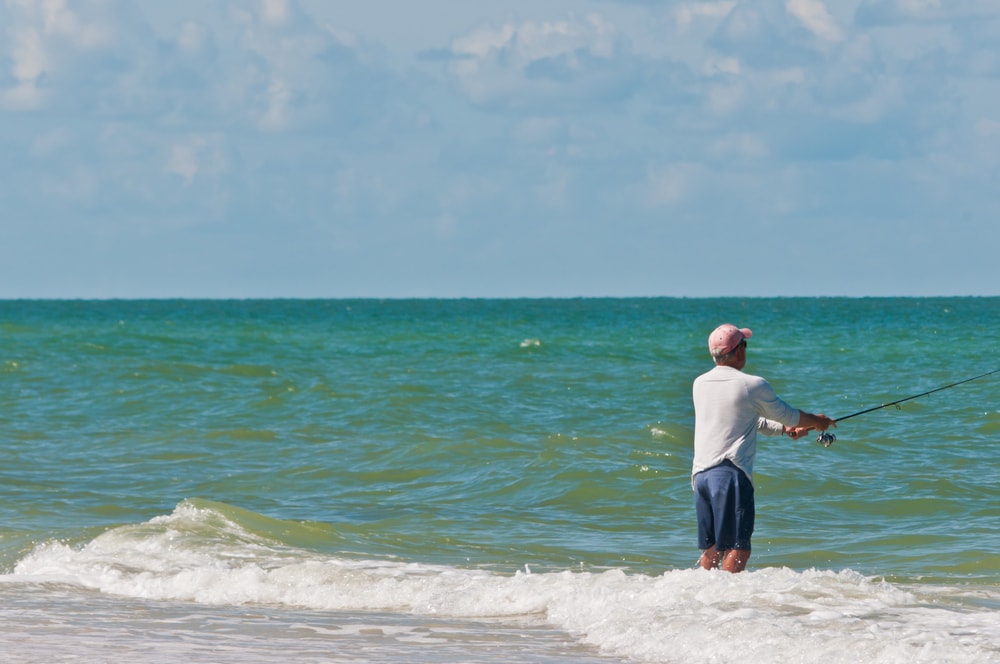
The surf is where most people relax and play, build sandcastles, and ride waves. Anglers know there is a treasure trove of hard-fighting and delicious fish to be caught in the same place.
Anglers set up on the beach with 6-10 feet-long (1.8 – 3.0 m) fishing rods with cut bait and heavy weights attached. Sometimes, small lures are used as well. They cast into the surf, sometimes only several feet, and wait for hungry fish to take their bait.
Popular surf fish are croaker, southern kingfish, Spanish mackerel, and sometimes even a shark.
9. Sight Casting
One of my personal favorites! This is where anglers stand on a boat at a vantage point (usually a tower on top of the console) to look out over the water searching for fish.
Once a fish, or a school of fish, is spotted, the angler readies their rod and prepares to cast. The captain slowly approaches the target fish. Then, the angler casts just in front of or behind the fish and gives the bait some action. Hopefully, the fish will react and slurp the bait down.
This is a very effective way to target trophy-size cobia and massive schools of red drum. This tactic is usually used while inshore fishing but is sometimes used when targeting tuna or stripers offshore.
10. Jigging
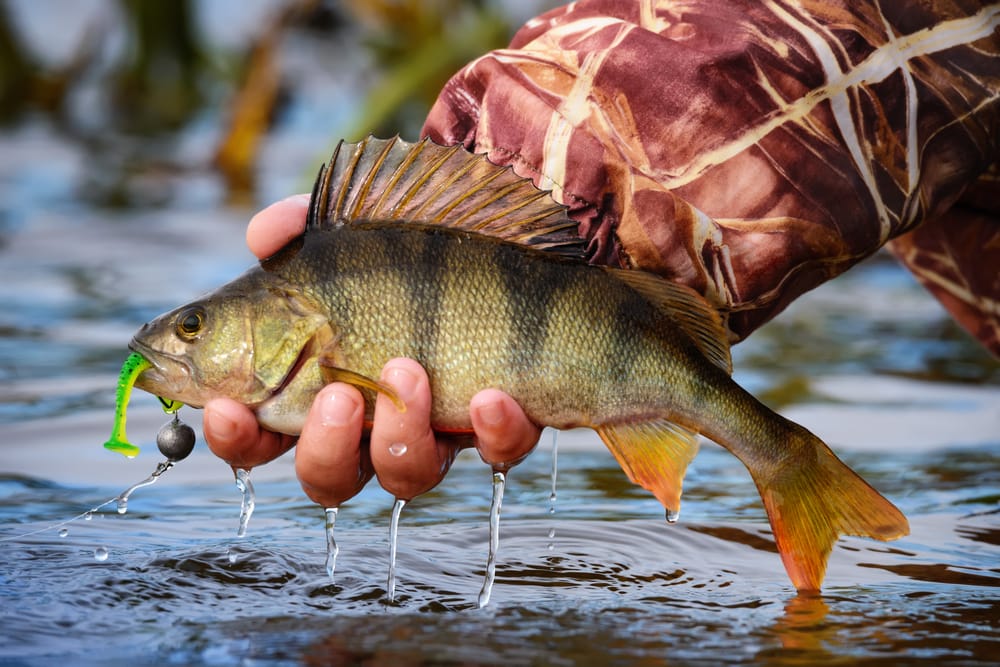
A jig is a weighted lure designed to mimic live bait. The fishing rod and reel combinations are built for either slow or fast-pitched jigging.
The angler will let the lure free-fall to a specific depth, then close the drag and “pop” the tip of the rod up while reeling up the slack in the line. This is repeated over and over until either a fish hits the jig or the jig reaches the surface.
1. Slow Pitch
This is a method of jigging where the lure is meant to move through the water more slowly. There is just as much action in the bait when it flutters down than when it is popped upwards.
2. Fast Pitch
Fastpitch jigging is when the angler very quickly pops the lure up while reeling down with little to no time between “pops”. This method is exciting but can be very tiring!
11. Big Game Fishing
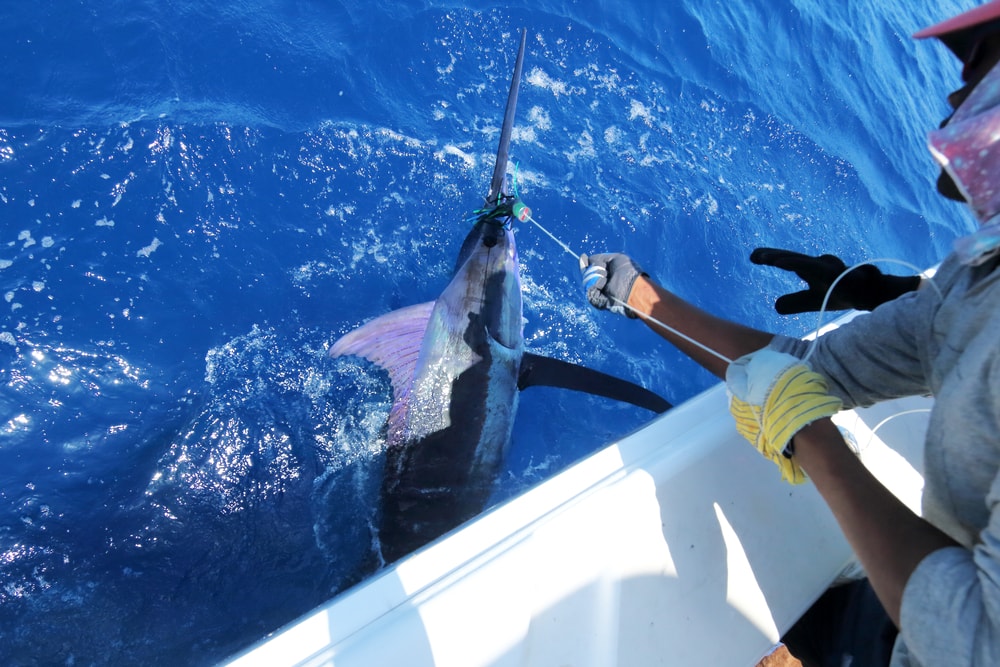
One of the most exciting and well-known areas of angling. This is when large pelagic species are caught. Crews on fishing boats travel sometimes hundreds of miles round trip for just one large fish!
These titans of the deep are almost always caught on heavy tackle. One of the most highly sought-after big game fish is a “Grander” marlin. This is a black or blue marlin over 1,000 lbs (453.6 kg).
Though very rare, 1-5 Granders are caught every year in places like Hawaii, Australia, and New Zealand, although up to 43 have been caught in past decades.
Big game species like tuna and wahoo are not only heavy-hitting fighters but fantastic table fare as well. My favorite big game species to target is the broadbill swordfish!
12. Heavy Tackle Fishing
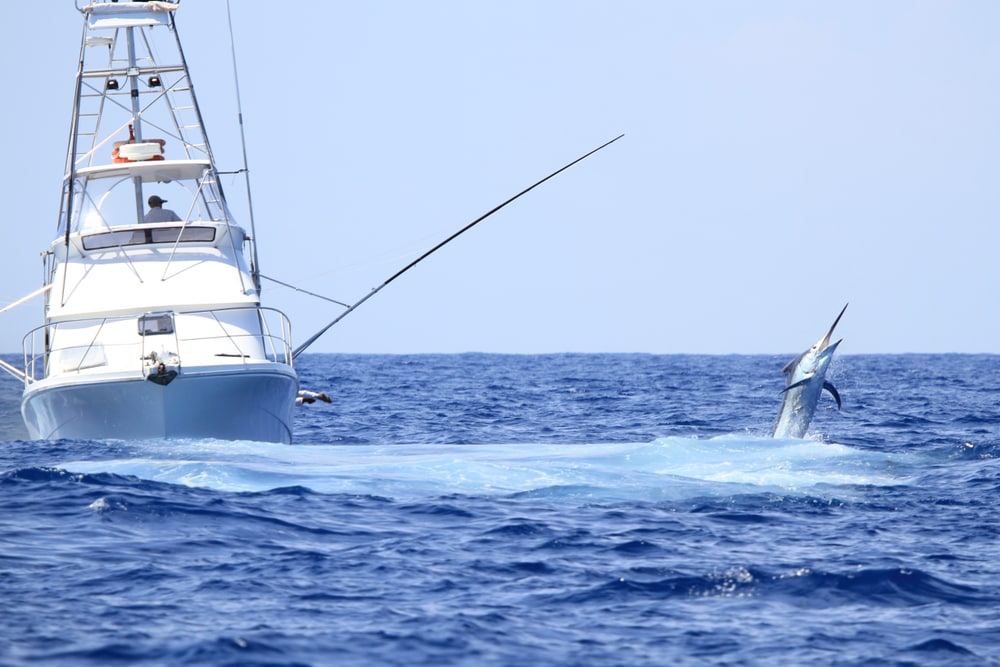
With big fish comes big gear. Heavy reels, strong lines, and super-duty rods are all used in this method to catch big game fish.
Heavy tackle reels are classified as 50 wide (50w), 80 wide (80w), and 130 wide (130w). 50w’s are usually used for mid to large-size fish whereas 130w’s are used when targeting fish up to or over 1,000 pounds (453.6 kg).
The pros of heavy tackle include shorter fight times and less finesse when fighting a fish. The cons are that the tackle itself can weigh enough to tire an angler and is very expensive.
13. Light Tackle Fishing
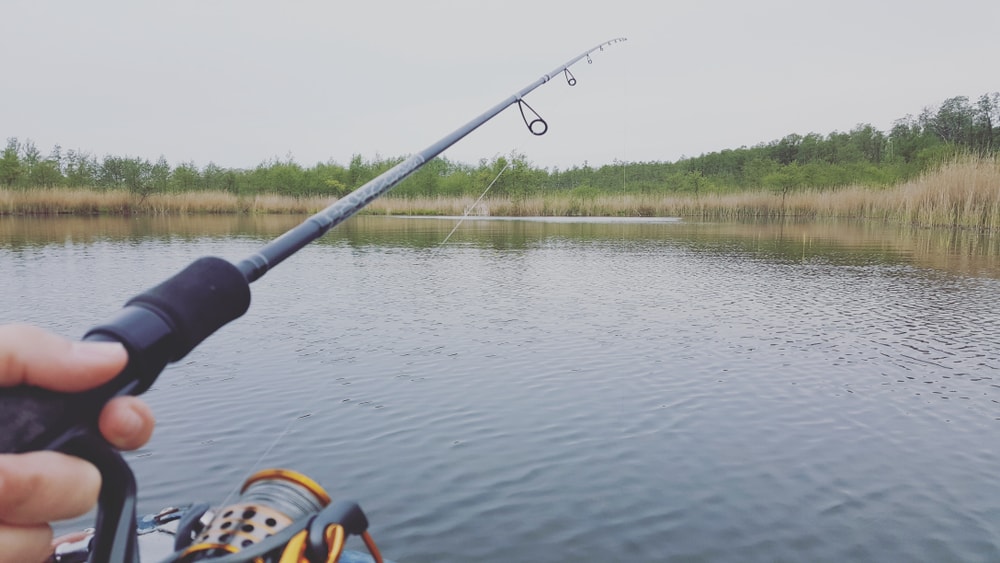
Light tackle can be used inshore, nearshore, offshore, and in freshwater. Almost always, light tackle is used to target generally smaller fish.
An exception is when anglers seek out a chance to achieve a record by catching huge fish, in relation to the weight of the rod, reel, and line.
This requires a high level of skill and finesse to accomplish. The International Game Fishing Association (IGFA) keeps records of anglers landing fish on different classes (weights) of line and publishes them accordingly.
14. Trolling
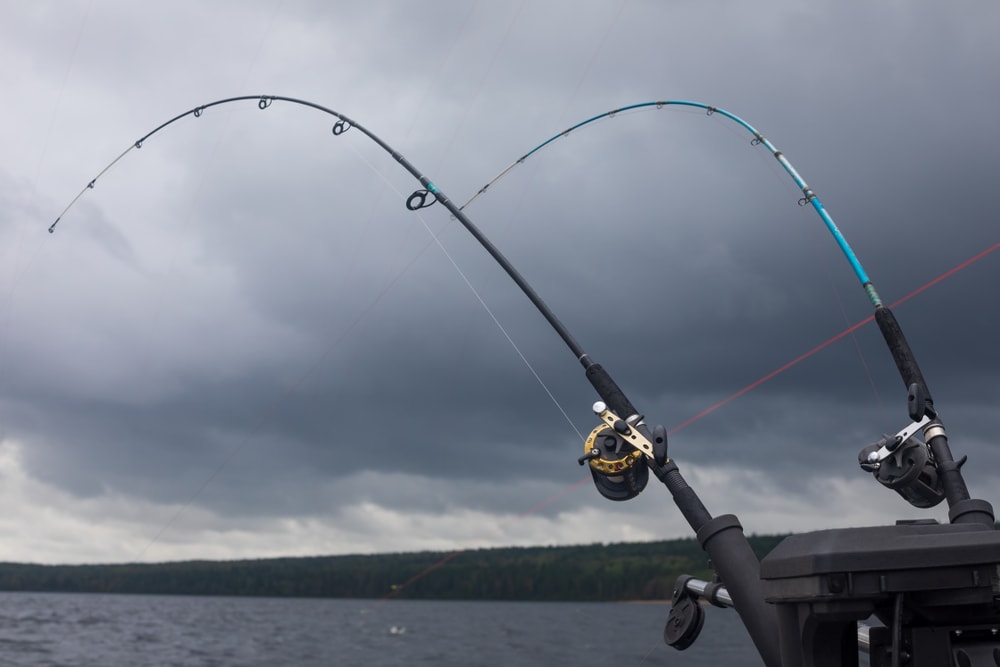
Trolling is a tactic where multiple lines, from multiple rods, are deployed from a moving boat, usually around 4-6 knots. This is to mimic a school of bait.
When trolling offshore, gear called outriggers is used. These are long arms that extend outward from the boat where a pulley system is used to clip and hold lines away from the boat. This keeps lines from getting tangled and presents the bait naturally.
There are four positions of a trolling spread, from closest to the boat to farthest: flatline, short rigger, middle rigger, and long rigger.
Sometimes, a fifth position, called the shotgun, is set very far behind the boat beyond the long rigger. There is a rigger position for the left and right sides of the boat.
1. High-Speed Trolling
The same method described above is used, but the speed is increased to 10-12 knots. Only two to four rods are trolled in order to keep tangles at bay. This tactic is most commonly used when targeting wahoo. Wahoo can swim up to 60 mph!
15. Deep Dropping
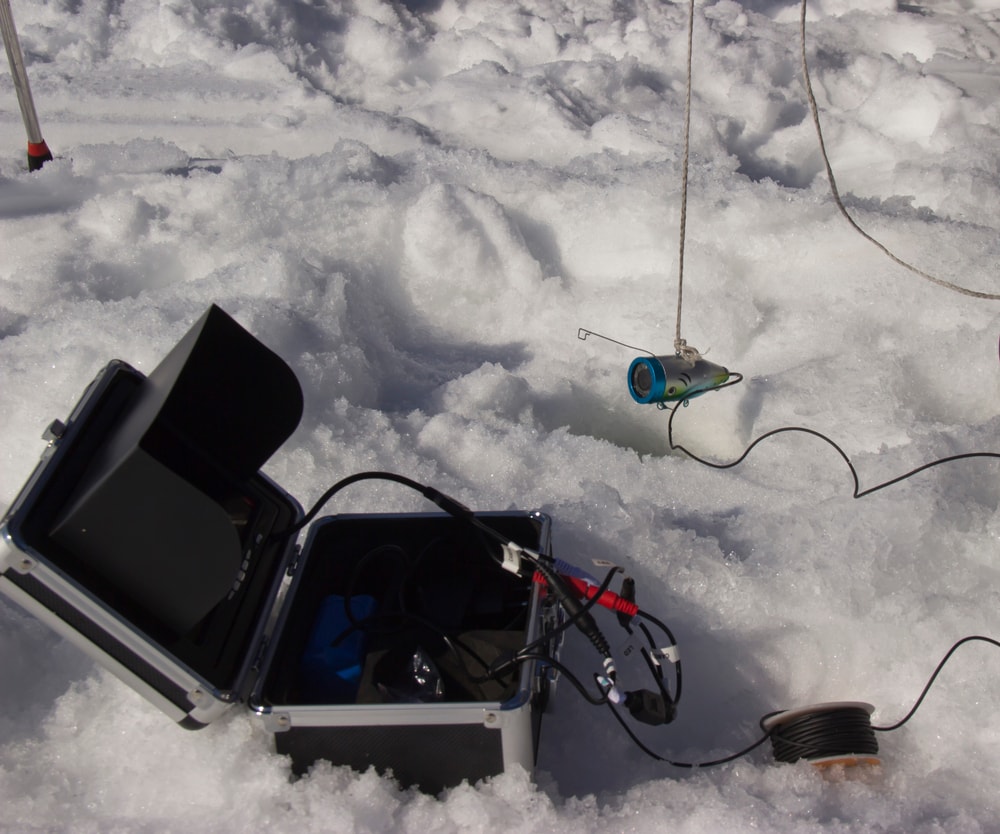
In the dark depths of the ocean lurks elusive yet tasty fish like golden tilefish and black belly rose fish.
To catch them, anglers deploy heavy-duty hooks with cut bait or jigs and 8oz-2lb (227-907 g) weights. They bounce their baits on the sticky ocean floor until a fish strikes! Anglers deploy baits anywhere from 500-1,500 feet (152 – 457.2 m) below the surface.
To target larger fish like swordfish, strips of bait, whole squid, or eels are sewn to large hooks and heavier weights are used to descend the bait. Some anglers prefer to use electric reels for this method of fishing.
16. Buoy Fishing
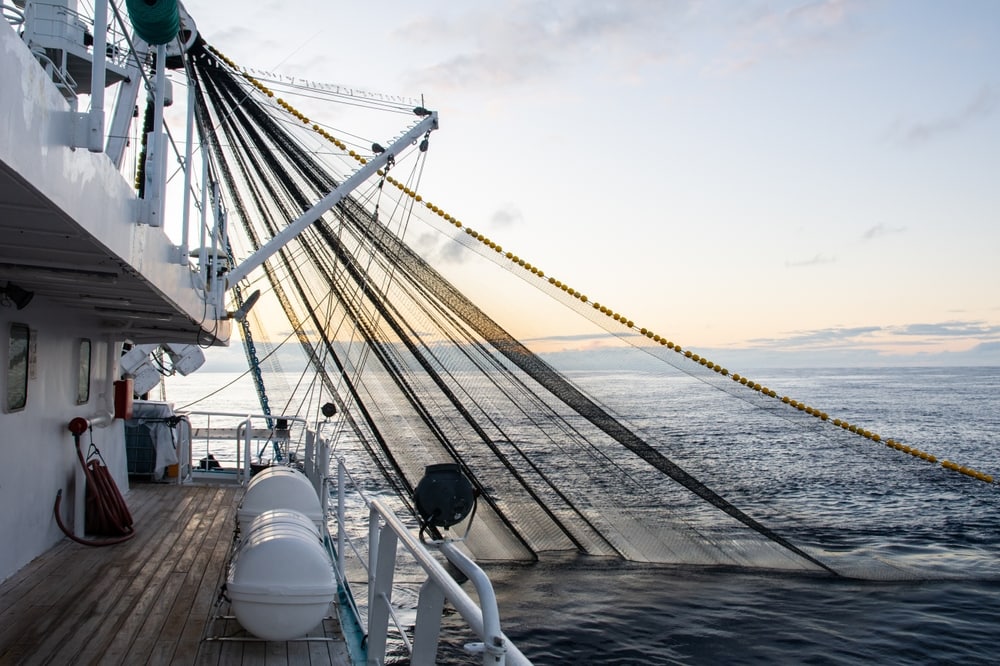
Think of the classic fishing setup: a hook with bait affixed to a bobber on a quaint backyard pond. Take that same concept and apply it to deep-sea fishing.
Usually, a large, cylindrical buoy is attached to a plastic rod with a flag on top. A steel clip is attached to the line at a specific depth marked on the spool.
Then, the bait and weight are carefully placed into the water with the drag almost the way off.
Once the buoy loop marked on the spool appears, the buoy is attached and the bait is continuously sent down. The buoy holds the bait at a predetermined depth in the water column. For swordfish, the buoy rod is fished at 750-900 feet (229 – 274 m).
17. Chunking
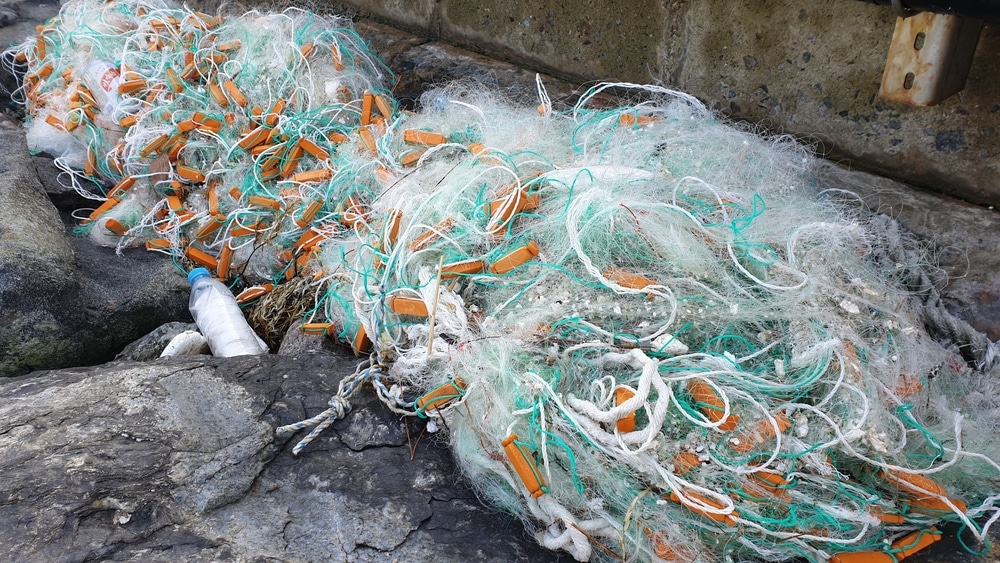
A type of offshore fishing, chunking is when chunks of bait are tossed into the water to trigger a feeding frenzy.
Then, anglers place the same chunks being used onto their hooks and toss them into the school of hungry fish. They wait for the bait to be swallowed by the fish before setting the hook and reeling it in.
Common chunk baits are bonito, albacore, and other bloody, oily fish.
Pro tip: when chunking for mahi-mahi, always keep one of the hooked-up fish in the water. This encourages other curious and hungry mahi-mahi in the school to come closer to the boat and be hooked.
Once another Mahi is hooked, bail the previously hooked fish into the boat and repeat until the box is full.
18. Chumming
Similar to chunking, the idea of this type of fishing is to encourage or start a feeding frenzy and attract hungry fish. Fish or shellfish are ground up, compacted into a mold, and frozen. This is called chum.
The angler places the frozen block into the water in a container with holes. Once it thaws, it will release fish oil particulates, which attracts the nearby fish. Once you have a good chum slick going, deploy your baits and wait for a strike.
19. Live Baiting
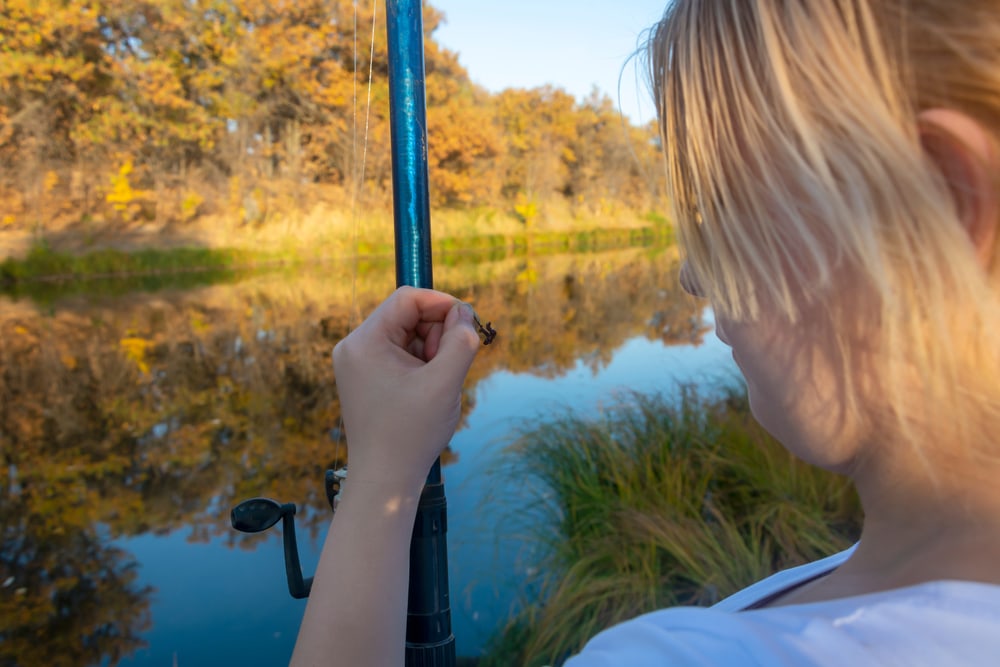
Any fisherman knows that, when possible, fresh live bait is the best way to get a bite. Live bait is attached to a hook and deployed back into the water. Predatory fish look for weak or injured fish as an easy snack.
Baitfish are caught by throwing a circular, weighted net called a cast net over schools of bait fish. There are many different sizes of nets, ranging from 2-20+ pounds (907 g – 9.1 kg).
The weights on the perimeter of the cast net fall around the bait fish and encapsulate them while the angler pulls the net in.
Some of the best freshwater bait is live minnows. For saltwater, you can’t go wrong with live pinfish or ballyhoo.
20. Dead Baiting

Most commonly used offshore when targeting billfish, tuna, and mahi-mahi. Fish like ballyhoo and mullet are caught, preserved, and packaged. Then, they are either bridled whole or cut into chunks.
Anglers prepare the dead baits by squeezing the feces out, breaking the spine carefully, clipping the pectoral fins, and finally bridling the bait to be attached to a hook.
Bridling refers to preparing and preserving the bait fish so it swims naturally in a trolling spread.
21. Kite Fishing
Somewhat similar to buoy fishing, the idea behind this type of fishing is to keep the bait fishing at a predetermined part of the water column. In this case, the area being fished is the surface.
A special square-shaped fishing kite is attached to the fishing lines by a loop and a delicate rubber band.
The kite keeps the live or dead bait gently skipping across the surface, usually mimicking a school of flying fish or ballyhoo. Rubber baits called “yummys” can be used, too. This method of fishing is very common in Florida, which is used to target sailfish.
22. Ice Fishing
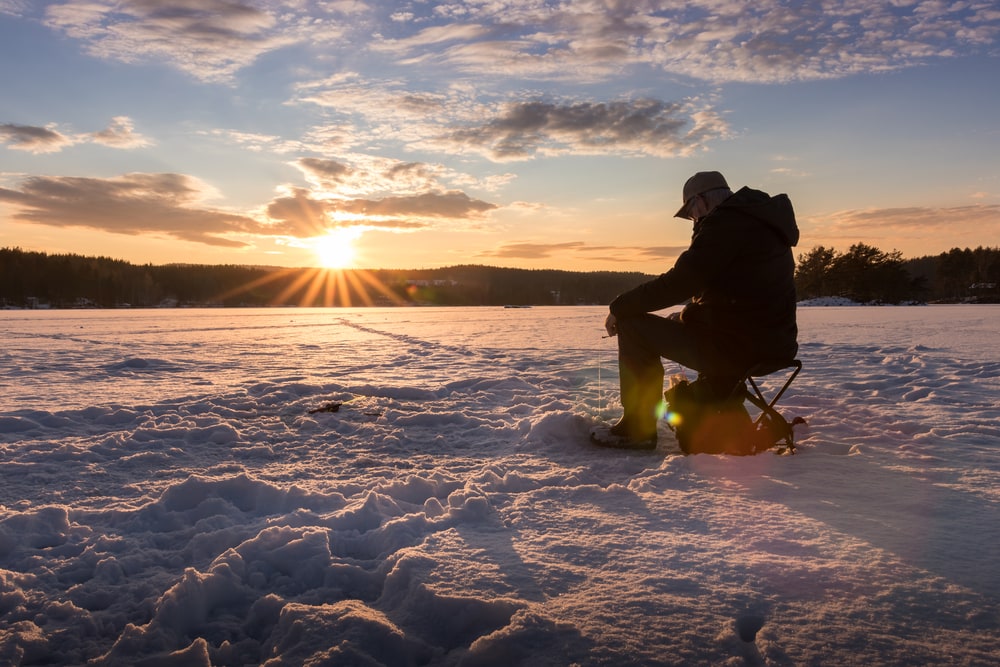
Popular in the north and midwestern United States, this winter pastime is a way for anglers to still get hooked even when their favorite fishing spot is under thick ice.
Anglers use special drills called augers to drill 6-18” (15 – 46 cm) wide holes in the ice. They use rods that are shorter and more flexible than rods not used for ice fishing.
Anglers deploy their baits through the hole and wait for a cold, hungry fish to take the bait. Many anglers set up a tent and chair over their fishing hole!
23. Trot-Lining
A trotline is a long, heavy-duty line or rope with sometimes up to 100 hooks and lines fixed to it in a downward position beneath the surface. Trot lining is practiced in shallow inland or inshore waters.
The angler harvests their catch after the odorous baits have sat for at least several hours and multiple fish like catfish, or crabs, are hooked.
24. Hand Lining
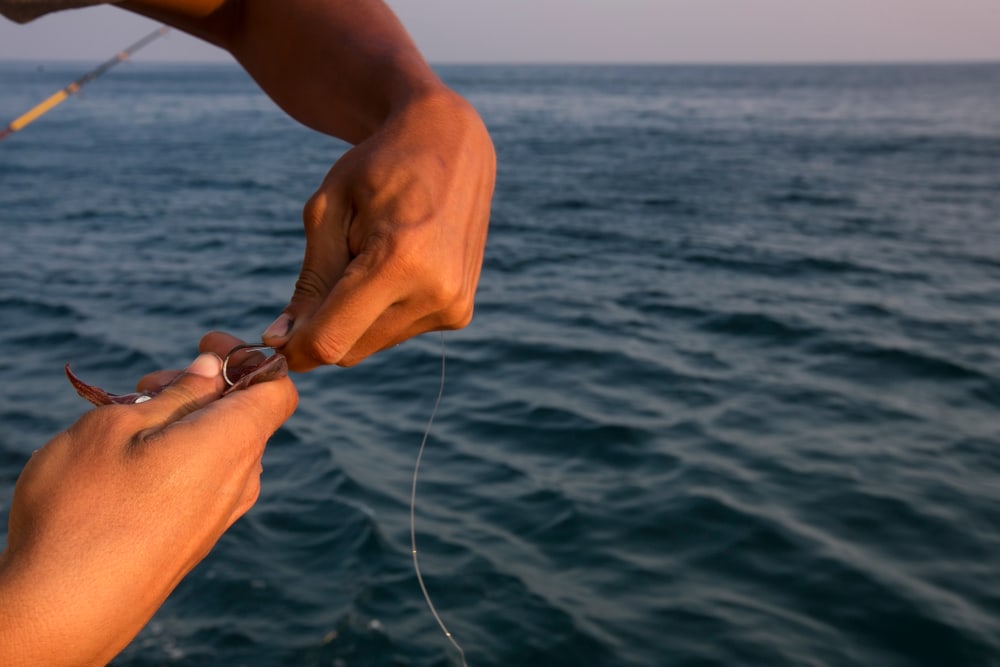
A primitive mode of fishing, hand lining involves only a fishing line, a hook, maybe some bait, and your hands.
Rods and reels need not apply. The angler holds the line, usually attached to a hand-held spool. They dangle the hook attached to the hand line into the water and wait for a fish to bite. Then, they hand-over-hand pull in the line with the fish.
25. Sportfishing
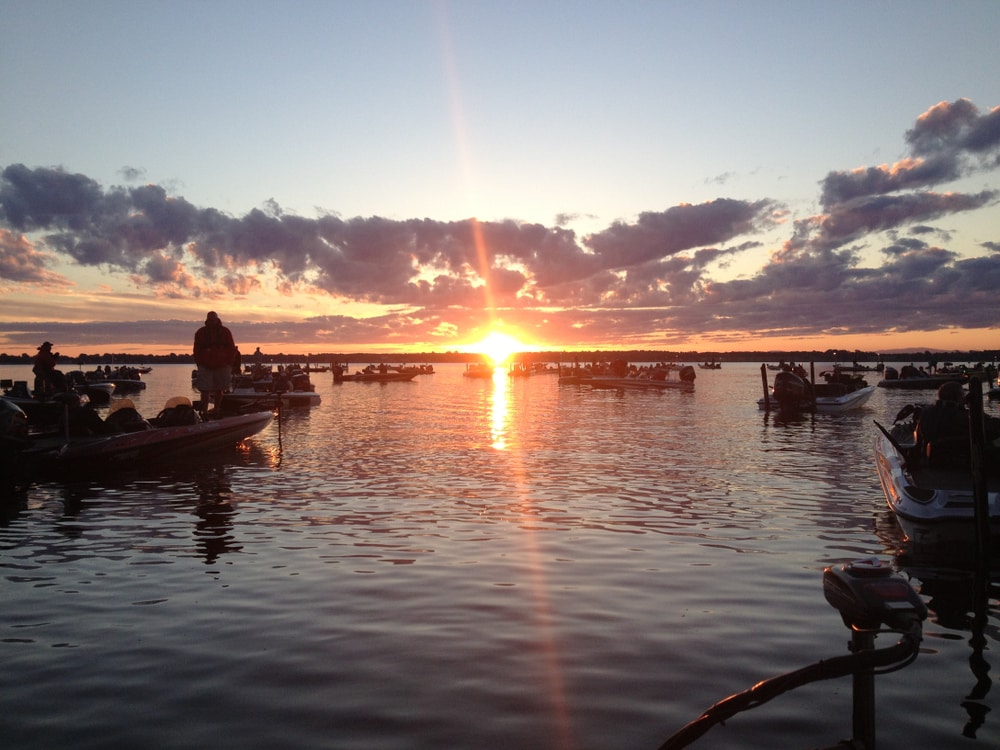
The act of fishing takes place to win a fishing tournament, bragging rights, or achieve a new personal or official fishing record.
Fishing boats set up for this type of fishing are called ‘Sportfishers’. Some famous sportfishing boat builders are Bayliss, Spencer, and Jarrett Bay.
26. Recreational Fishing
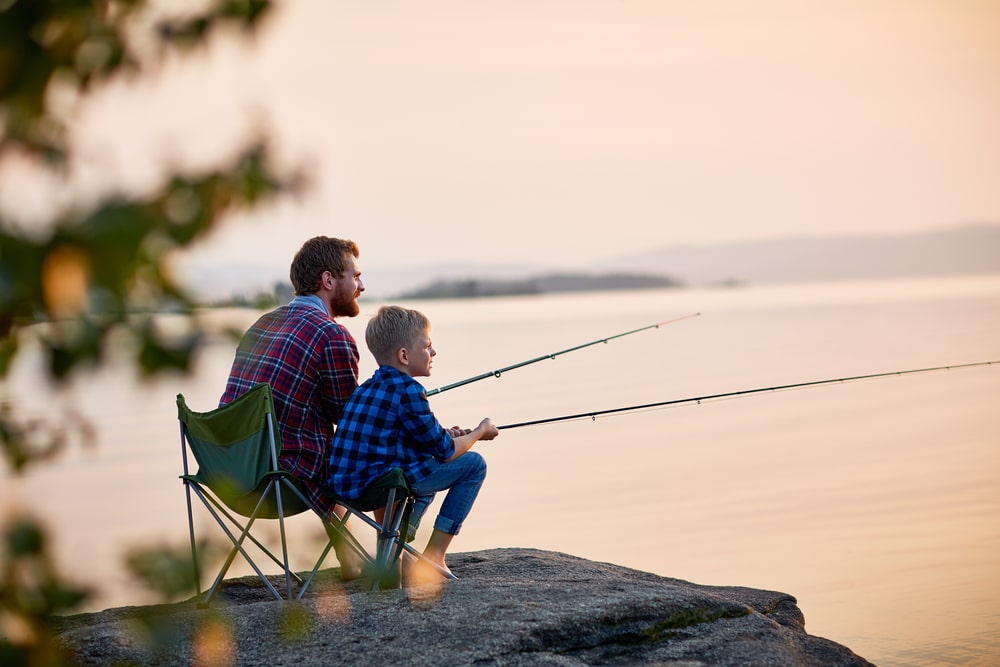
Fishing recreationally can be done as a hobby, to feed your family and friends, or as a way to enjoy nature and learn about different types of fish.
Recreational fishing means that the fish being caught are not for sale or participation in a tournament.
27. Commercial Fishing
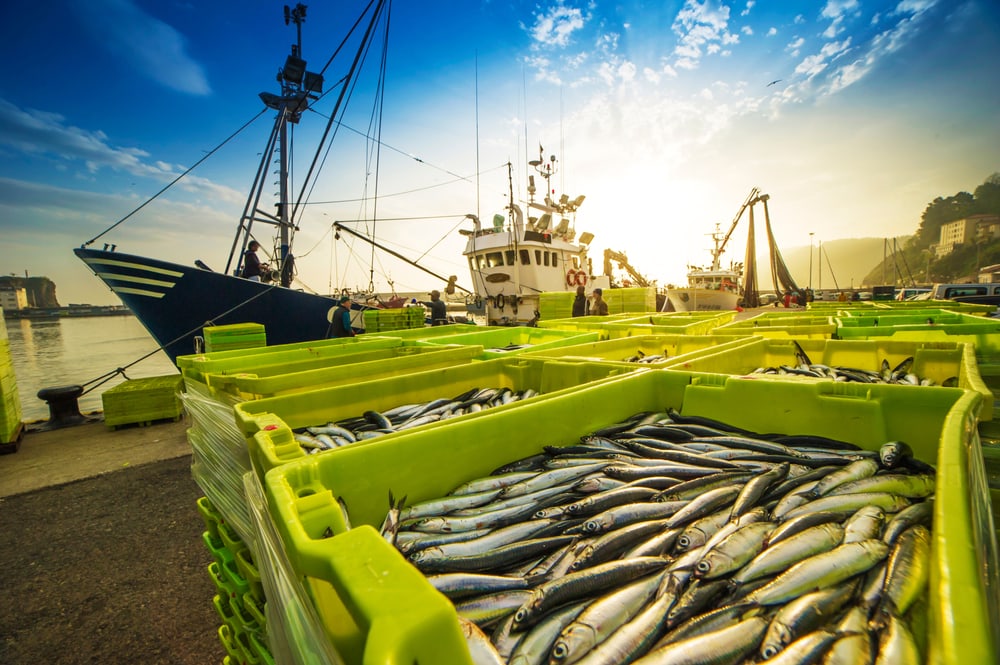
Commercial fishermen deploy many different methods to harvest fish for sale and consumption by the public.
Strict regulations surrounding the species they can target, the gear they can use, and the amount of fish that can be harvested are in place.
28. Long Lining
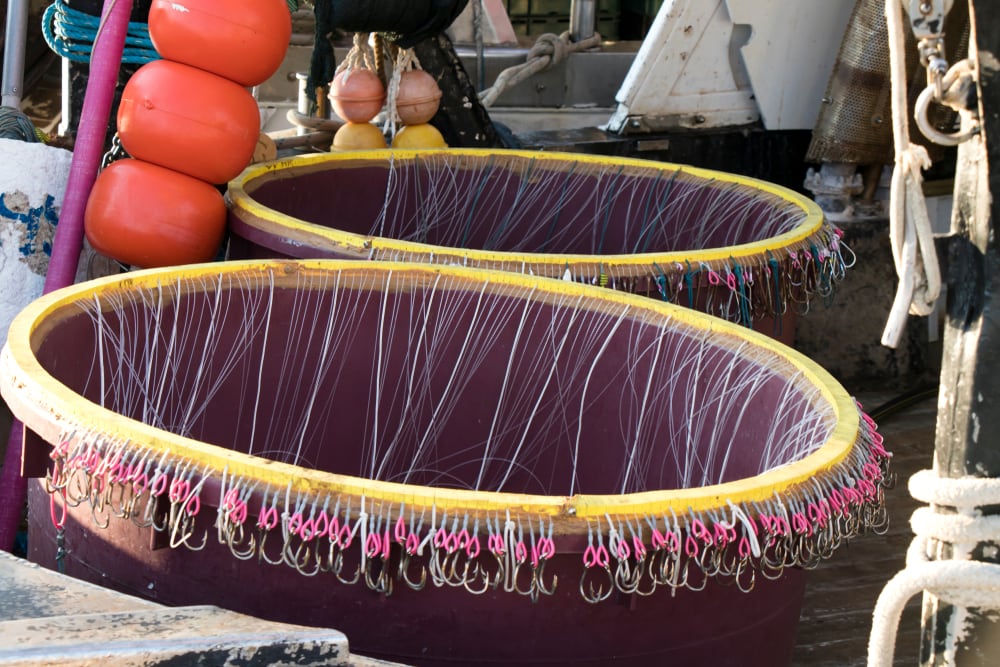
A large-scale trot line for harvesting large amounts of pelagic fish to be sold. A heavy steel cable, sometimes miles long, with downward-hung fishing lines and big hooks is deployed.
Buoys are used to mark the beginning and ends of the cable. The hooks are set at predetermined depths. Crews then retrieve their catch and re-bait the hooks.
Some commercial long liners freeze and store their catch for up to one month offshore before it reaches fish markets.
29. Purse Seine Fishing
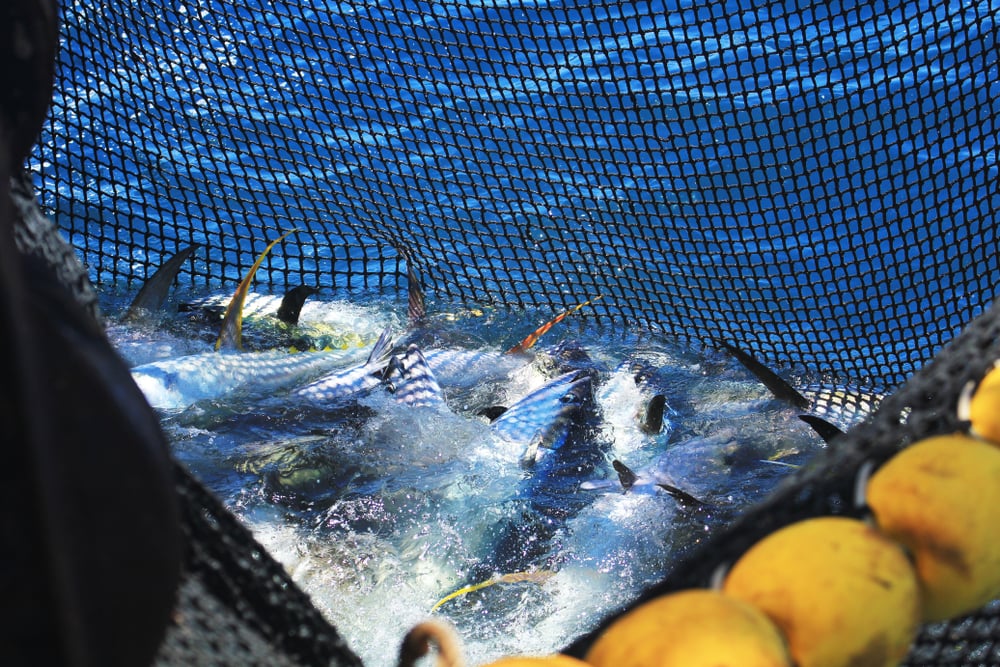
The net used in this type of fishing is used to encircle an entire school of fish. The top of the net has floats and the bottom has weights strung along it.
A rope is threaded through the top and bottom of the net to pull it closed around the school of fish, just like a drawstring purse.
30. Trawling
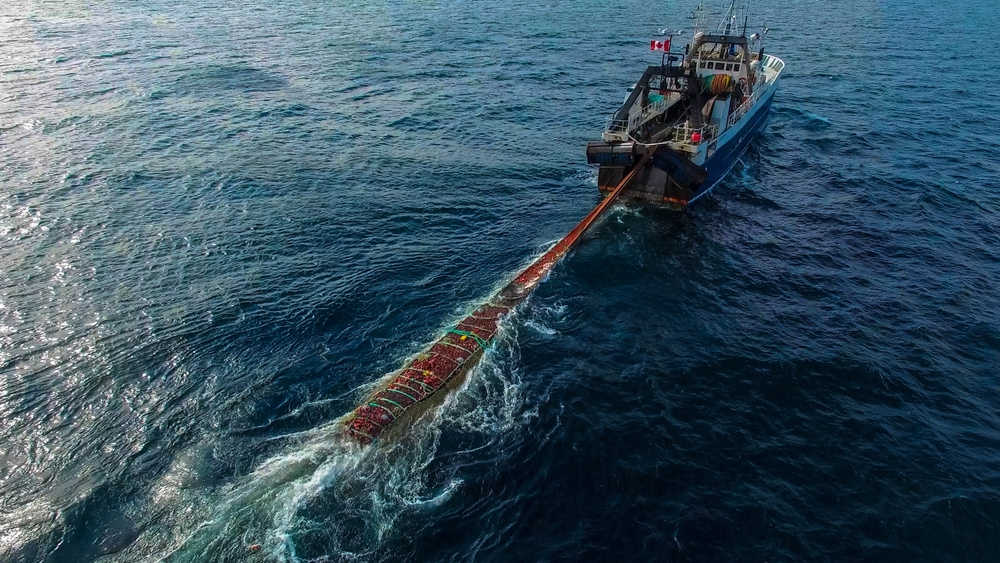
A trawler is a boat that drags a trawling net along the bottom of the ocean. The bottom of the net is meant to drag along the seafloor, corralling fish and shellfish or even mollusks.
The net is hauled into the back of the boat by a large rotating drum. The crew separates the target species from the bycatch, the unwanted fish.
31. Trapping
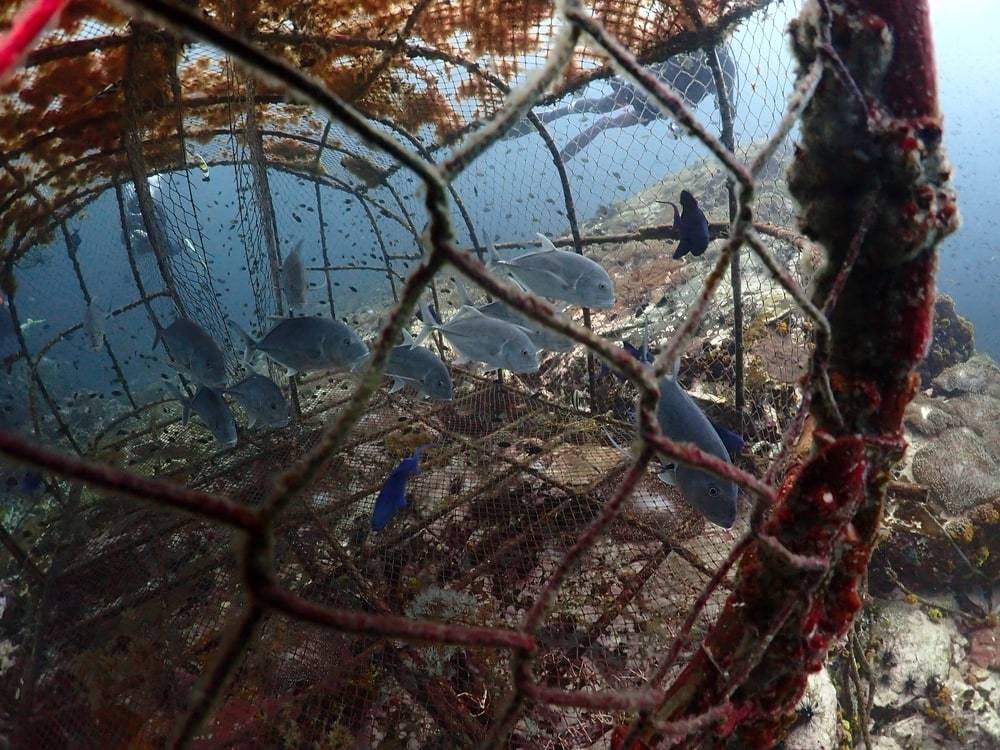
Large metal traps, with bait pots in the middle, are sunk to the bottom of the sea. Then, fish or crustaceans swim into the traps but cannot get out. This is an efficient way to harvest large amounts of fish.
Fishermen retrieve the traps after a few hours or overnight to harvest their catch and re-bait the traps. On the east coast, black sea bass is usually commercially harvested by trapping.
32. Green Stick Fishing or Green-Sticking
A green stick is a long fiberglass pole, about 20 feet long, mounted on fishing boats.
The green stick holds multiple baits skipping across the surface using extreme tension, floated by an inflated poly ball at the end or a “bird”. It is used to simulate a school of bait fish on the surface.
When a fish strikes the bait, the clip breaks away from the main line and the fisherman finishes reeling in the fish on a bandit reel. This method is deployed when trolling offshore for tuna.
33. Bill Fishing
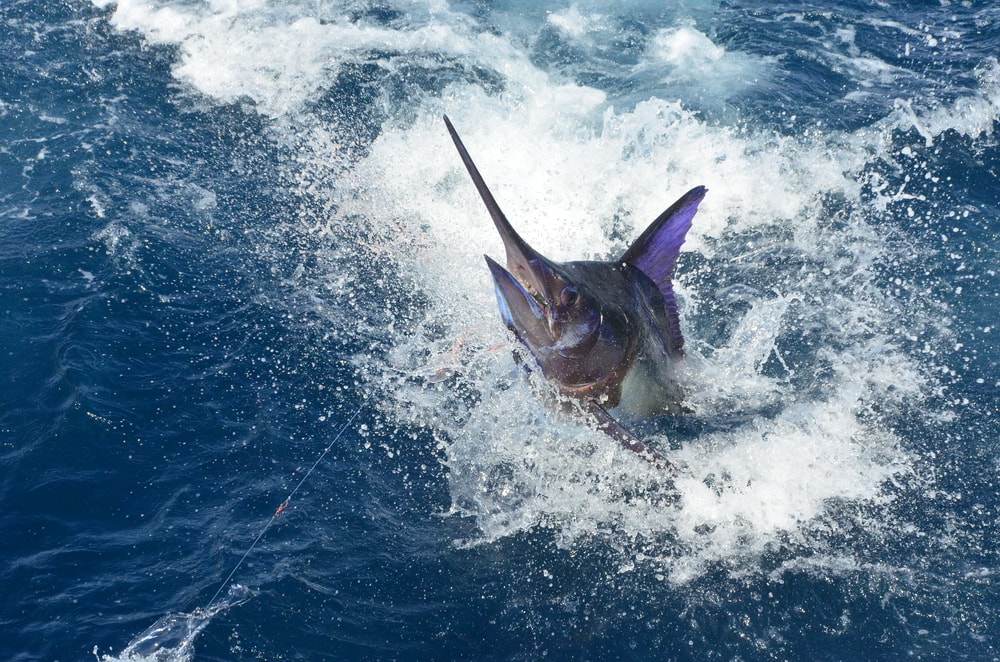
This is the act of angling for billfish. The nine types of billfish are Atlantic sailfish, Pacific sailfish, white marlin, black marlin, blue marlin, striped marlin, broadbill swordfish, short bill spearfish, and round scale spearfish.
Billfish are mostly caught while trolling dead bait or lures, but other methods can be deployed depending on species and conditions.
If you are lucky enough to catch and release all nine species, you apply for a spot in the highly esteemed and sought-after Royal Billfish Slam Club through the IGFA.
34. Spearfishing
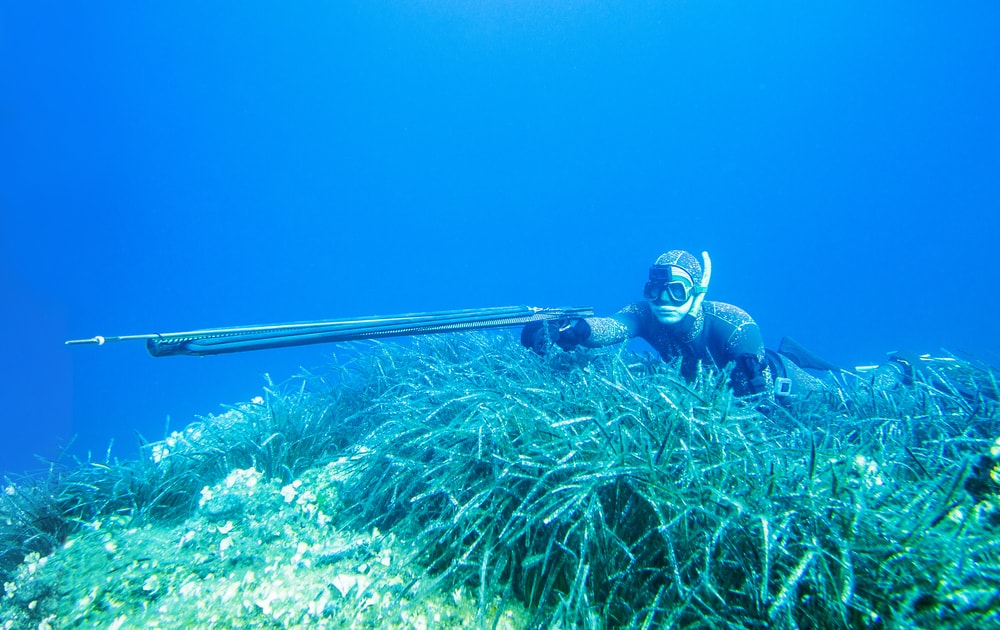
Have you ever wanted to swim amongst the fish? Well, spearfishers do just that, all while harvesting tasty and healthy meals.
Spearfishers use either a speargun (a wooden gun with a spear propelled by thick rubber bands) or a pole spear (a steel pole with a sharp spear) that is manually thrust into a fish to dispatch and harvest it.
Some experienced free divers spearfish at 100 feet (30.5 m) below the surface to harvest fish!
35. Gigging
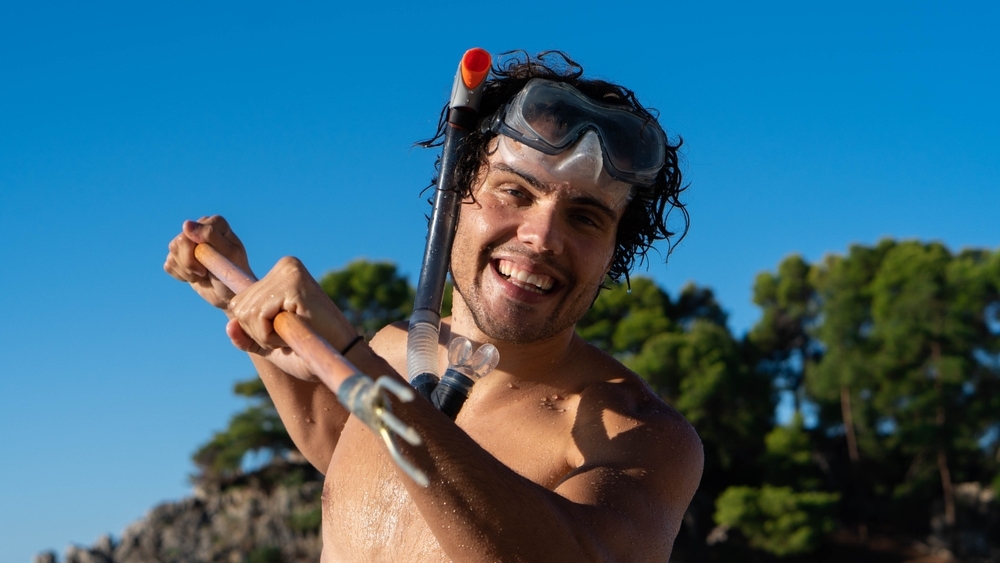
Anglers usually gig fish at night. Using lightweight boats built for shallow water, anglers use a very bright light to see fish on the bottom.
Then, they use three or four-pronged gigs to pierce the fish and bring it into the boat. The prongs are barbed to keep the flailing fish on the gig. Flounder is a common species that giggers seek out.
36. Bow Fishing
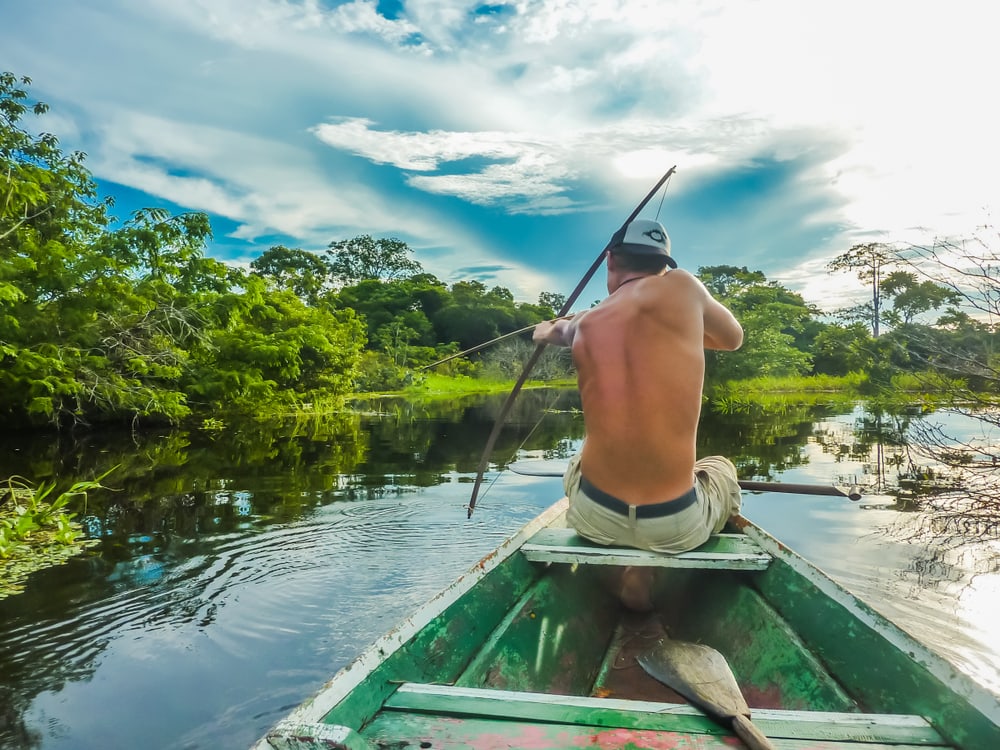
Combining angling and archery, bow fishing uses a bow with a reel attached. Arrows are fitted with special fishing broadheads and attached by a line to the reel.
Once the angler spots a fish, they draw their bow, shoot the arrow, and then reel in the arrow attached to the pierced fish.
37. Wade Fishing
Wade fishing can be done in any body of water, salt or fresh, that is chest-deep or shallower. Anglers wade into the water with their fishing gear to cast into the water they cannot reach from shore or boat.
Wade fishing can be done comfortably in just a swimsuit or shorts in warm weather.
In colder temperatures, anglers wear chest or pant waders with waterproof shoes or attached booties to keep warm and dry.
38. Bait Casting
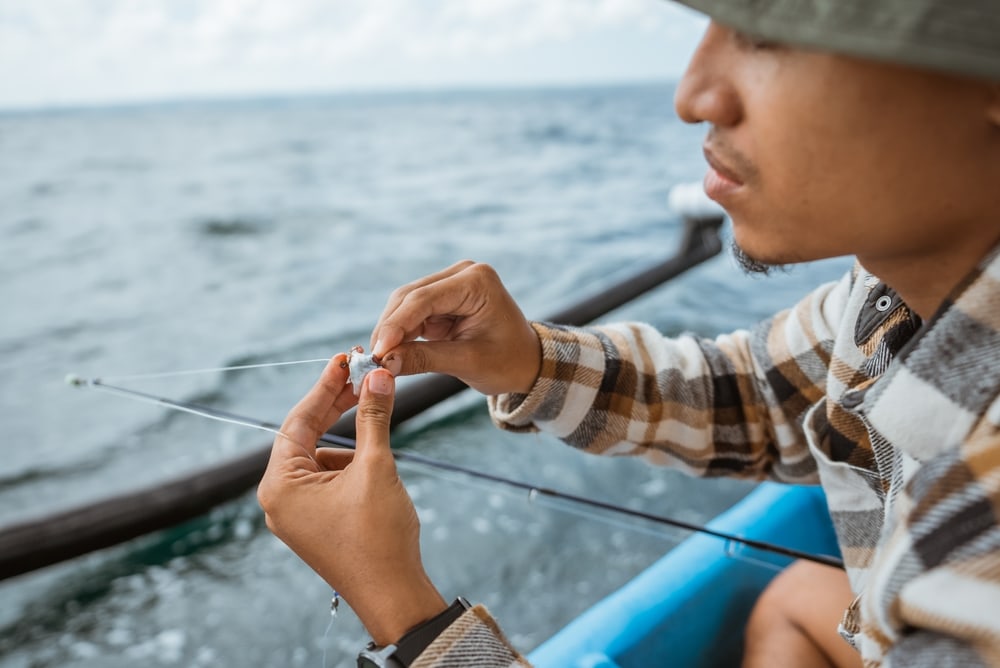
Popular in the freshwater bass fishing world, bait casting takes a bit of practice but can be very rewarding.
A special reel called a bait caster is spooled with a braided fishing line and a 6-12 inch (15 – 30 cm) monofilament leader attached with a topwater lure at the end.
You must maintain just the right amount of pressure on the spool while casting for the line to leave the reel smoothly and not tangle. When executed properly, bait casting allows anglers to cast very far.
39. Top Water Fishing
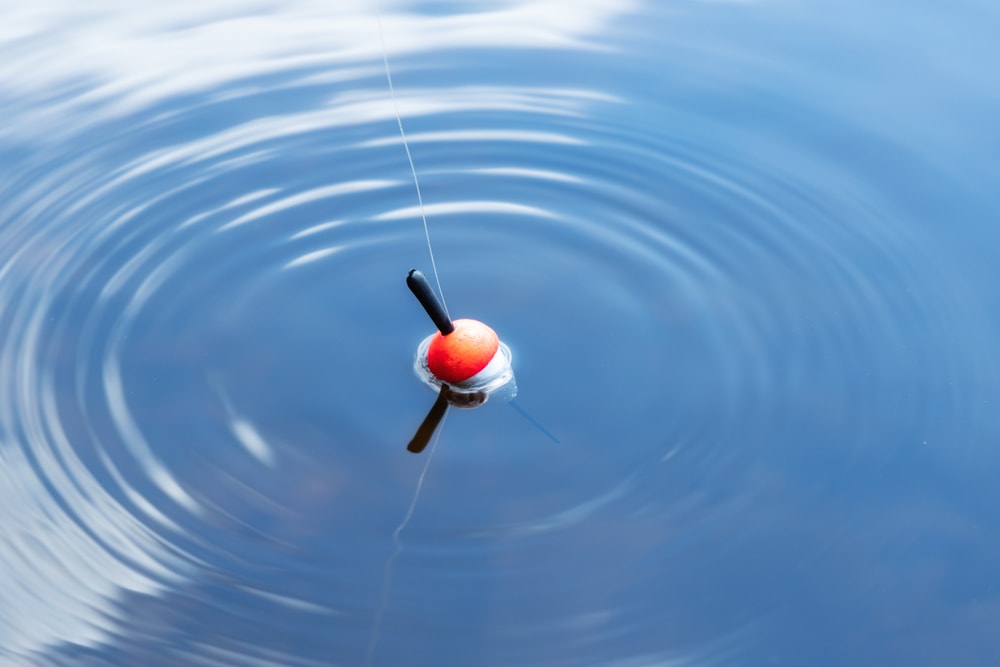
Top water fishing is when anglers use lures to mimic surface baits. Fish then strike from below; watching this looks like an explosion in the water!
You May Also Like: 15 Beautiful And Strange Beach Birds Of Florida (Chart & Pics)
Types of Fishing FAQ
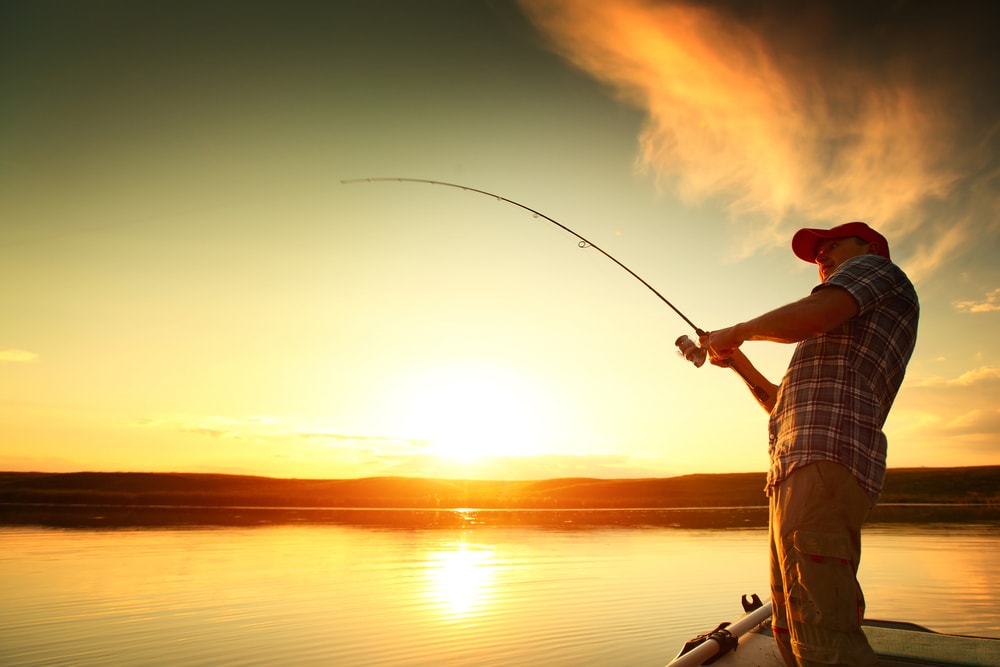
Are there different fishing boat styles?
Yes, fishing boat styles range from 80-foot (24 m) sportfishing yachts to 30-foot (9.1 m) center consoles, down to small kayaks and canoes.
How do I get started fishing?
Start by researching what kinds of species you may be interested in catching within your local waters.
Then, you can search for local clubs or find a mentor. You could even get your own tackle and just learn as you go, there are many accomplished self-taught anglers! Your local tackle shop is a hub of local knowledge you should also take advantage of.
Some people also like to book chartered fishing trips or hire a guide to show them the ropes.
Are fish good to eat?
Yes! Not only are fish very tasty, but they provide many health benefits. They are high in protein and vital omega-3 fatty acids.
An easy fish recipe is to pat the filet of your choice dry, coat it with salt, pepper, and lemon slices, and bake at 400 degrees for 15 minutes with some olive oil and butter.
How do teams of anglers display their released catches?
Anglers fly small, rectangular flags from outriggers or fishing rods called release flags. Each billfish has a delegated color and silhouette on the flag to show the species released.
A flag hung upside down means the fish was released and right-side up means the fish was harvested. It is considered bad flag etiquette to leave your release flags flying after 10AM the following morning.








